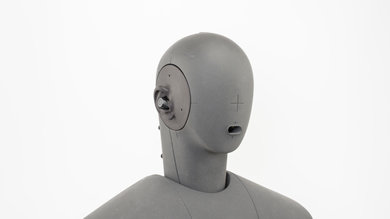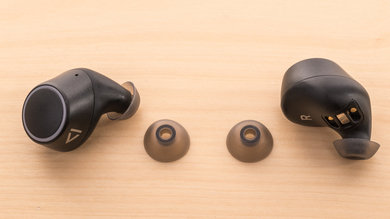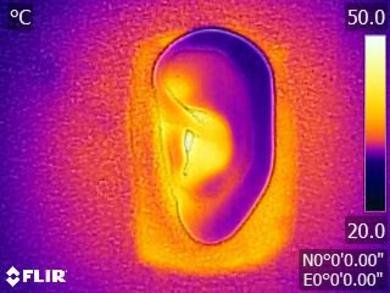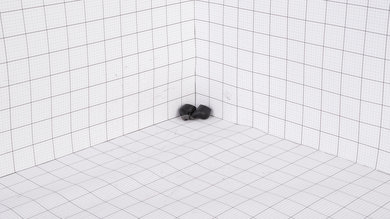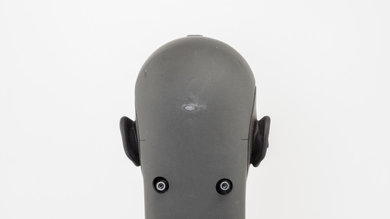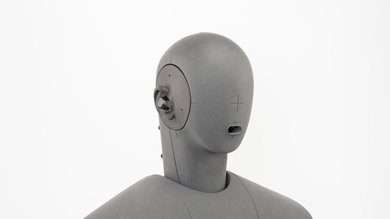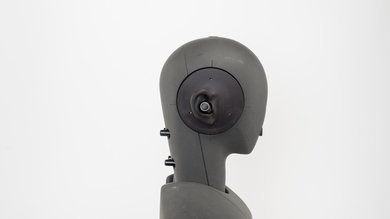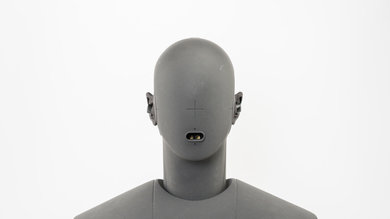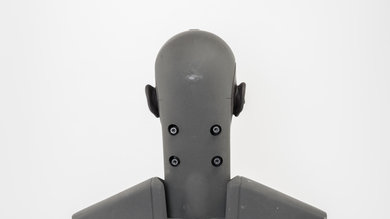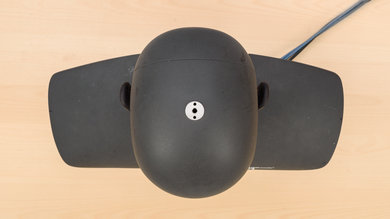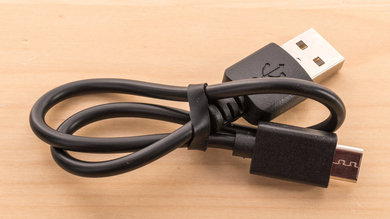The Creative Outlier Air Truly Wireless are in-ears with a very bulky design. They're comfortable, but people with smaller ears might feel too much pressure inside the ear. The headphones and case's overall build quality is good and feels sturdy. They offer about 8 hours of continuous playback time, which is high for a truly wireless design. Unfortunately, they don’t block out much ambient noise in the lower-end frequencies, like the sound of a bus engine, and won’t be the best option for commuting. Nevertheless, they offer great overall value if you don’t mind pushing the buds deeper into your ear when using their controls.
Our Verdict
The Creative Outlier Air are satisfactory for mixed usage. They're better-suited for sports due to their truly wireless design that's stable and breathable. Their sound profile isn’t the most neutral, but they’ll satisfy fans of bass-heavy genres. They're bulky, truly wireless headphones; their fit doesn’t isolate that much noise, which won’t be ideal for public transit, but they can be efficient for a work environment. You shouldn't use them for watching TV or gaming because of their very high latency, which will give you a delay between your audio and video.
- Portable, breathable and stable for sports.
- Well-built design.
- Good battery life for truly wireless earbuds.
- Poor microphone performance.
- Very high latency.
- Lack of customization via software support.
The Creative Outlier Air are fair for neutral sound. While the in-ear fit might not be ideal for neutral listening, they have a decent sound profile with a well-balanced and fairly even response. However, their bass is a bit boomy, which results in thick and cluttered vocals and lead instruments. They also sound a bit sharp and piercing, especially on already bright tracks. Unfortunately, their fit might also not be the most comfortable for long listening sessions, and they don’t have a dedicated app with an EQ to customize their sound to your liking.
The Creative Outlier Air are decent for commuting. Even if these headphones don’t have the bass noise isolation against the deep rumbles of an engine, they can be a convenient option when commuting. Thanks to their portable design and great battery life, they're easy to carry around for long trips and rides. However, we don’t suggest taking calls with these headphones while you’re traveling, as the mic doesn’t handle noise well.
The Creative Outlier Air are great for sports. Like most truly wireless headphones, they're very portable and won’t make you sweat more than usual when working out while wearing them. Also, their bulky design feels secure inside the ear and will be suitable for running without a problem. They're also rated IPX5 for water resistance.
The Creative Outlier Air are fair for the office. While they don’t isolate well in the bass range, they do a pretty good job blocking work environment noise like ambient chatter and A/C noise. The in-ear fit might not be ideal for long listening sessions, but on the upside, their battery life will allow you to use them for about eight hours before needing a charge. Unfortunately, they don’t support multi-device pairing.
The Creative Outlier Air are poor for gaming. You shouldn't use them for gaming. Their latency is too high, and their microphone is sub-par for online multiplayer games. They also can’t be customized like some gaming headsets.
Changelog
- Updated Feb 20, 2020: Converted to Test Bench 1.4.
- Updated Nov 21, 2019: Converted to Test Bench 1.3.1.
- Updated Nov 21, 2019: The charging port was incorrectly listed as Micro-USB. It's actually USB-C.
- Updated Nov 06, 2019: Converted to Test Bench 1.3.
Check Price
Popular Headphones Comparisons
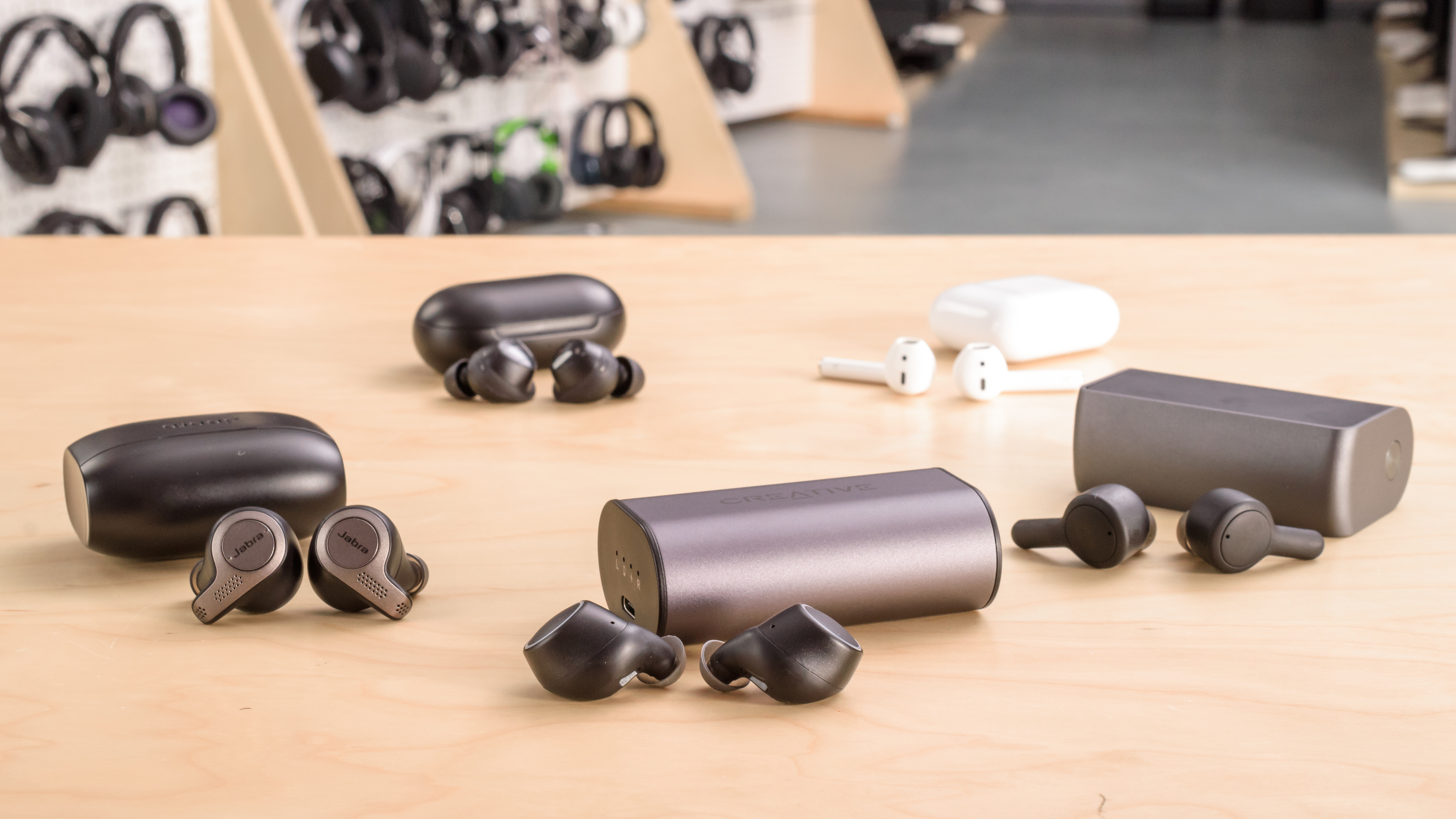
The Creative Outlier Air are decent truly wireless headphones but have a rather bulky design. While they offer decent overall performance and value, their control scheme is hard to use, and registering controls can push the buds inside your ears, which is painful and could be a deal-breaker for some. On the upside, they offer a good amount of continuous playback for truly wireless headphones.
See our recommendations for the best true wireless headphones, the best wireless earbuds for working out, and the best earbuds and in-ears.
The Jabra Elite 65t Truly Wireless might be an overall better value than the Creative Outlier Air Truly Wireless. The Jabra don’t have as many latency issues, they can connect simultaneously to two devices, they have a companion app that allows some customization, and their mic is better for calls in slightly noisy environments. Their fit is also better to passively isolate ambient noise. On the other hand, the Creative have a slightly better sound profile, but you can’t customize it to your liking. They also have a better case and feel a bit more comfortable than the very bulky Jabra.
The RHA TrueConnect Truly Wireless and the Creative Outlier Air Truly Wireless are two very similar-performing headphones. The Creative have a better overall sound quality, but if you're a fan of bass-heavy genres, the overemphasized low-end of the RHA will suit you better for thump and rumble. The main difference between the two headphones would be the superior noise isolation performance of the RHA, which makes them a better option if you want to use your headphones in public transit. Their design is also smaller and might suit most ears better. On the other hand, the Creative have longer single charge battery life.
The Creative Outlier Air Truly Wireless are slightly better mixed-usage earbuds than the Apple AirPods (2nd generation) because of their closed-back design. The Creative Outlier sound profile is more balanced and packs more bass. They also offer volume control, although it's hard to use. On the other hand, the Apple are very comfortable if their one-size-fits-all design fits you well. They're better built and recharge faster. However, you'll get more continuous playback time with a single charge of the Creative Outlier.
The Samsung Galaxy Buds are better true wireless headphones than the Creative Outlier Air Truly Wireless. They are very small and fit nicely into the ears, which is more comfortable than the bulky design of the Creative. The Samsung also have a slightly more balanced sound profile and offer better isolation performance, on top of having customization options thanks to a companion app. On the other hand, the Creative have volume controls by default, but it's a pain to use efficiently. The Samsung don’t have that feature by default, but you can set it up inside their app.
Test Results

The Creative Outlier Air are pretty bulky truly wireless in-ears that protrude quite a bit out of the ears. The buds’ body is made out of slightly glossy plastic, while the button is matte. There’s an LED light circle surrounding the buttons for information regarding battery level or during the pairing procedure.
The Creative Outlier Air are decently comfortable. Even if their design is rather bulky and quite similar to the Sennheiser Momentum True Wireless, you can find a decent fit with the right tip options. However, they only come with one extra tip size, which is quite disappointing. On the upside, the tips don’t go very deep inside the ear, but their design might put pressure on your inner ear. Unfortunately, their control scheme buttons are hard to press, and you’ll need to push the buds into your ear to register a command, which gets annoying and can even hurt. If you think two tip options might not be enough for you, take a look at the truly wireless Sabbat E12 True Wireless or the Creative Outlier Air V2 True Wireless.
Each bud has a single button and is fairly easy to use. You can play/pause with a single press on both buds, skip tracks with a double-tap on the right earbud, or go back with the left earbud. You can also control the volume by pressing and holding the buttons; the left bud reduces volume, and the right one raises it. However, you can only adjust the volume one notch at a time since holding down the button for too long after the audio cue will make the headphones enter pairing mode, which is frustrating. Also, the buttons are fairly stiff and hard to press, which means you have to push the buds even further inside your ears, which can be painful, especially when controlling the volume.
Like most in-ear headphones, the Creative Outlier Air don’t trap heat inside your ears, even if they're bulky. You shouldn’t notice a big temperature difference when wearing these when working out and won’t sweat more than usual. This makes them a decent option for physical activity and working out.
The Creative Outlier Air come with a nice hard charging case that protects them well against scratches, physical damage from falls, and light water exposure. It has LED lights as battery indicators for the buds and the case. It has a nice sliding compartment which magnetically holds the buds in. It can fit in most pockets.
The Creative Outlier Air are well-built, truly wireless headphones, but their whole build is plastic. The buds feel dense but don’t have the premium feel as the Sennheiser Momentum True Wireless. They should still survive a few accidental drops without too much damage. These headphones are also rated IPX5 for water resistance. While the case looks aluminum or metal, it's plastic with a metallic finish; this is slightly disappointing. On the upside, it still feels sturdy and protects the headphones well.
The frequency response consistency is excellent. If the user can achieve a proper fit and an air-tight seal using the assortment of tips, they should get consistent bass and treble delivery every time they use the headphones.
The Creative Outlier Air's bass accuracy is okay. The range is overemphasized, so mixes have extra thump, rumble, and boom. However, some users may find they sound muddy.
The mid-range performance is very good. There's some overemphasis coming from the high-bass into the low-mids, which results in a muddy and cluttered mix. However, the mid to high-mid are flat, so vocals and lead instruments sound present and detailed.
The Creative Outlier Air have a great treble range. The low-treble is neutral, so vocals and lead instruments are clear and present. A slight over-emphasis in the mid-treble can make sibilants like cymbals a bit sharp and piercing.
The stereo imaging is outstanding. Their weighted group delay is at 0.17, which is very low. The group delay graph also shows that the entire response is well below the audibility threshold. It ensures a tight bass and a transparent treble reproduction. Also, the L/R drivers of our unit were well-matched in frequency, amplitude, and phase response. It's important for the accurate placement and localization of objects (voices, instruments, video game effects) in the stereo image. These results are only valid for our unit, and yours may perform differently.
The soundstage is poor. This is because creating an out-of-head and speaker-like soundstage is largely dependent on activating the resonances of the pinna. The design of in-ears and earbuds fully bypasses the pinna and doesn't interact with it. Also, because these headphones have a closed-back enclosure, their soundstage won't be perceived to be as open as that of open-back earbuds like the Apple AirPods (2nd generation) Truly Wireless or the Bose SoundSport Free Truly Wireless.
These headphones have a sub-par noise isolation performance. Their fit doesn’t block much ambient noise and practically doesn’t do anything against lower frequencies like the rumbling of a bus engine, which means they won’t be ideal for commuting. On the upside, they isolate by about 14dB in the mid-range, which is good to reduce ambient chatter. In the treble range, responsible for sharp S and Ts and A/C fan noise, they achieved isolation of 32dB, which is also good. Consider the TOZO T12 Truly Wireless if you're looking for a comparable set of truly wireless in-ears that do a better job of passively blocking out ambient noise.
The leakage performance is fantastic. The Creative Outlier Air don’t leak, so there's no need to worry about disturbing people around with your music, even if you listen with very loud volumes. With the music at 100dB SPL, the leakage at one foot away averages at 25dB SPL and peaks at 35dB SPL, roughly as loud as a very calm room and way below the noise floor of an average office.
The Creative Outlier Air's integrated microphone, like most Bluetooth headphones, is just okay. The LFE (low-frequency extension) of 273Hz suggests that speech recorded/transmitted with this mic will sound rather thin. The HFE of 3.4kHz indicates that recorded speech will noticeably lack detail and presence. However, speech would still be decently intelligible in quiet environments.
The integrated microphone is poor at noise handling. In our SpNR test, it achieved a speech-to-noise ratio of 3dB, indicating that they're best suited for quiet environments. However, in moderate and loud environments, they will have difficulty separating speech from ambient noise.
We’ve measured just under eight hours of battery life on a single charge. However, it's slightly under the advertised 10 hours, which is a bit disappointing. The case also only offers about two additional charges. However, they have the advantage of playing music on just one earbud while the other one charges, though, which can be helpful.
These headphones don’t have a dedicated companion app that allows customization options.
These truly wireless in-ears are Bluetooth compatible, and if your source supports Bluetooth 5.0, you might even get better results and better overall performance than what we measured. However, these headphones don’t support NFC or multi-device pairing, which is unfortunate.
The Creative Outlier Air have latency issues. With 347ms of delay, you will more than likely notice a delay between your audio and what you’re watching, which can become quite annoying even on apps that have some compensation to reduce that delay. While the headphones do support the aptX codec, their latency is still quite high.
The case that comes with the Creative Outlier Air acts as a charging dock that gives you about two additional charges for the headphones. You can recharge the case via a USB-C cable. Unfortunately, that’s the only input it has.

